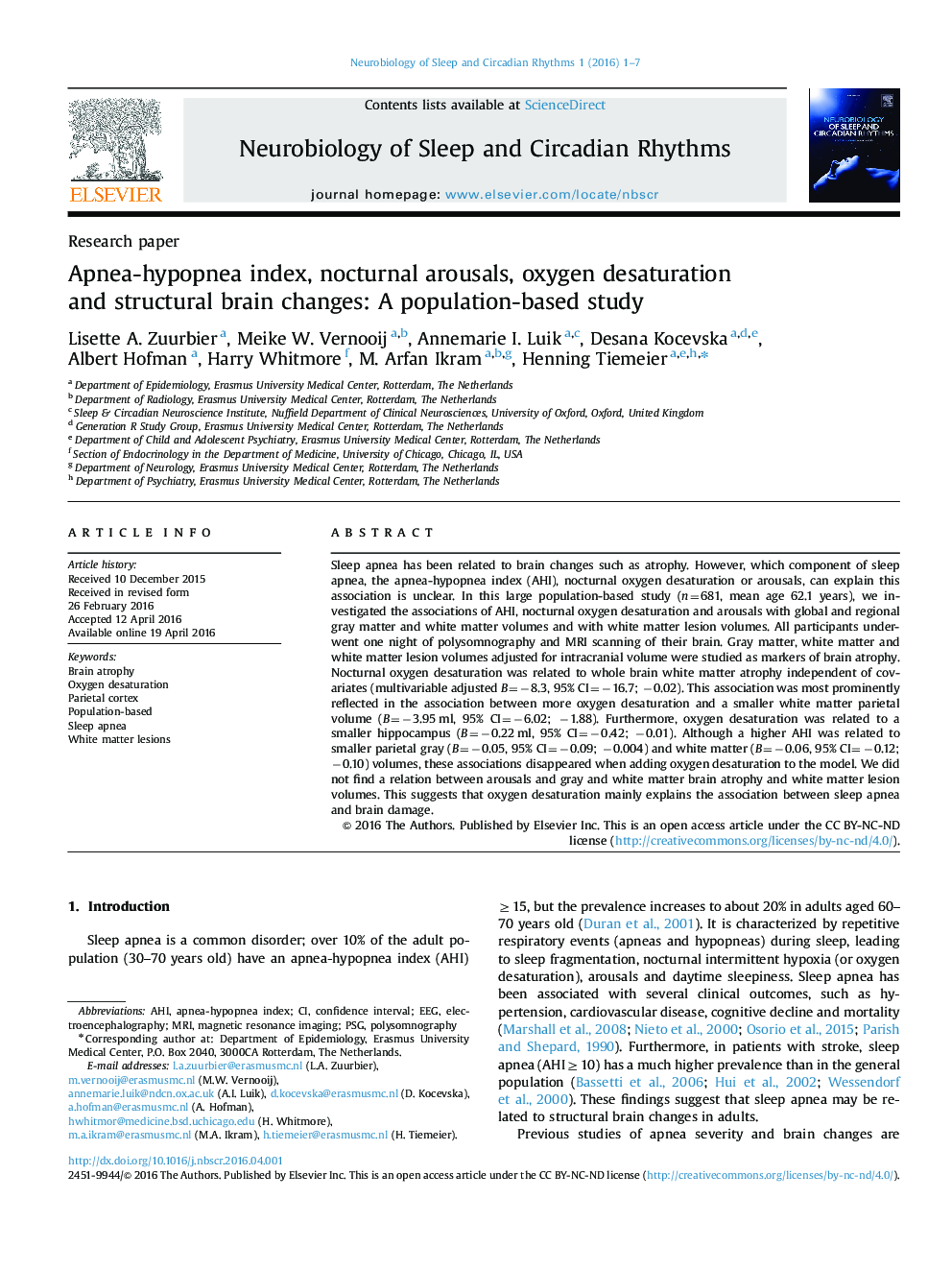| Article ID | Journal | Published Year | Pages | File Type |
|---|---|---|---|---|
| 4318503 | Neurobiology of Sleep and Circadian Rhythms | 2016 | 7 Pages |
•Nocturnal oxygen desaturation is associated with a smaller white matter volume.•A higher AHI is related to smaller parietal gray and white matter volumes.•These associations disappear when adding oxygen desaturation to the model.•Oxygen desaturation mainly explains the association between apnea and brain damage.
Sleep apnea has been related to brain changes such as atrophy. However, which component of sleep apnea, the apnea-hypopnea index (AHI), nocturnal oxygen desaturation or arousals, can explain this association is unclear. In this large population-based study (n=681, mean age 62.1 years), we investigated the associations of AHI, nocturnal oxygen desaturation and arousals with global and regional gray matter and white matter volumes and with white matter lesion volumes. All participants underwent one night of polysomnography and MRI scanning of their brain. Gray matter, white matter and white matter lesion volumes adjusted for intracranial volume were studied as markers of brain atrophy. Nocturnal oxygen desaturation was related to whole brain white matter atrophy independent of covariates (multivariable adjusted B=−8.3, 95% CI=−16.7; −0.02). This association was most prominently reflected in the association between more oxygen desaturation and a smaller white matter parietal volume (B=−3.95 ml, 95% CI=−6.02; −1.88). Furthermore, oxygen desaturation was related to a smaller hippocampus (B=−0.22 ml, 95% CI=−0.42; −0.01). Although a higher AHI was related to smaller parietal gray (B=−0.05, 95% CI=−0.09; −0.004) and white matter (B=−0.06, 95% CI=−0.12; −0.10) volumes, these associations disappeared when adding oxygen desaturation to the model. We did not find a relation between arousals and gray and white matter brain atrophy and white matter lesion volumes. This suggests that oxygen desaturation mainly explains the association between sleep apnea and brain damage.
